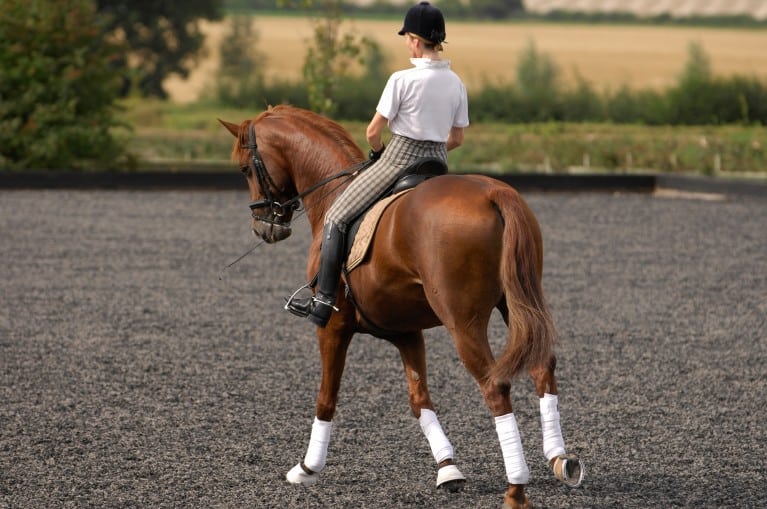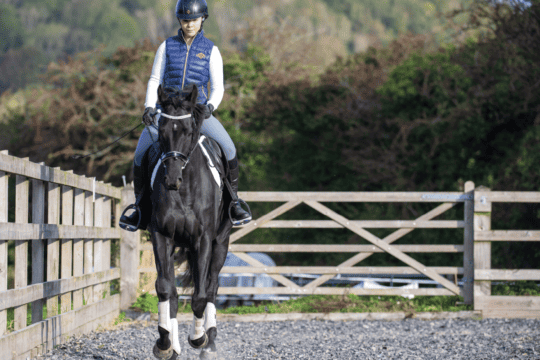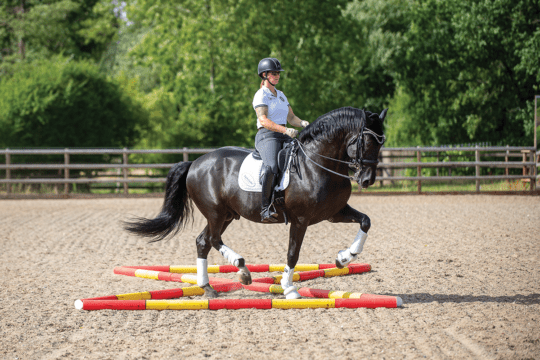Follow Tina Sederholm’s tips for getting a lazy horse listening and going forward

A good schoolmaster or riding school horse tolerates mistakes from an inexperienced rider. The downside is that as well as ignoring the errors, they also start to ignore a correct aid, which often results in laziness. To rectify this, first look at ways you can improve yourself, then use a correcting exercise for the horse.
Where is the leg?
Keeping your shoulders back, use your leg at – or just behind – the girth when you want the horse to respond forward. If it swings back, the horse will tense his ribs against you rather than move forward, and your upper body will pitch forward, unbalancing the horse and making it difficult for him to respond.
It is common for a novice rider to lose their balance when they use their legs. This can result in them ‘catching’ the horse in the mouth, which means ‘stop’, or landing heavily in the saddle, which is painful and discourages the horse from going forward next time. So keep your hands soft and forward – don’t pull back – and stay in the middle of the saddle when he accelerates.
To help you achieve this, trainer Sally Swift advises imagining there is a spring pulling your belly button diagonally forward and upward towards the sky. Do this (but only in rising trot), and your legs and feet should come underneath you, and your upper body become taller. This helps you stay in balance, and engages your own energy, which will encourage the horse to move forward positively.
Seeing the point
Horses are by nature conservers of energy, unless they see a point to what they are being asked to do. So when you’re trotting around an arena, look ahead and keep the horse on the line you have decided upon, not where you happen to end up. If, however, he veers off your intended line, steer him back. The horse should then pay attention to you because you are being clear and decisive.
Correcting him
If you are pushing just to prevent the horse from grinding to a halt, the horse is not responding correctly to your leg. Use the following exercise to correct his response.
On a loose rein, ask the horse to lengthen his stride. If he goes forward willingly, great. If he gives you a lazy response, you need to clarify your aids.
The next time, nudge him with your heels and tap him lightly on the shoulder with your whip immediately after. You should expect the horse to jump forward from this, so be ready to keep your hands forward and soft, and to stay with him. Let him trot or even canter forward for a few strides without touching his mouth, so he that really gets the point.
Now go back to walk, and try using your leg with the original aid, and see what response you get. If he is unwilling again, repeat the exercise until you get a satisfactory response. Remember that you’re not just using the whip as if it is something you would normally do – this is a correction, so that you can then use a lighter leg aid.
Top tip
Once a horse has responded to any aid, stop doing it immediately so that he can realise he has done the right thing.
If you keep nudging him with your leg once he is going forward or keep kicking him when he is ignoring you, you underline the disobedience.















